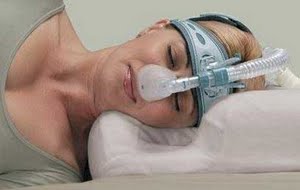Cpap Ventilator

CPAP stands for Continuous Positive Airway Pressure (pronounced See-Pap). This treatment delivers a constant flow of positive air pressure through the airways and into the lungs.
CPAP is used in a number of medical situations, for example, as a treatment mode on a hospital ventilator when a patient is being weaned from mechanical ventilation, or via a face or nasal mask when a patient requires a little more respiratory support than a standard oxygen mask can offer. Non-invasive CPAP (delivered through a mask) can buy medical staff time before intubation (placement of a breathing tube directly into the airway). For some patients, non-invasive CPAP can improve their respiratory function sufficiently, so that mechanical invasive ventilation never becomes necessary. A CPAP only setting on any system requires the user to be self-ventilating.
CPAP therapy has also become well established in the community, mainly in the treatment of obstructive sleep apnea. The principle is exactly the same but the tubing connects to an air compressor machine, rather than a ventilator that has a whole range of settings. Room air is blown from the machine, down the tube and into the airways. Some people (for example, those with multiple diagnoses of obstructive sleep apnea and lung disease) may require additional oxygen and this can be delivered via an entrainment port on most machines.
CPAP is considered the treatment of choice for moderate to severe cases of obstructive sleep apnea. Indeed, some people with milder OSA have progressed to CPAP because other treatments have not worked. The CPAP system is particularly effective in treating obstructive sleep apnea because it pushes positive pressure from the air compressor into the airway, splinting open the soft tissue that would have been causing the obstruction. A securely fitting mask is needed so that positive pressure does not escape around the edges.
Various CPAP Delivery Systems
Travel and CPAP FAQs
http://www.snoozeorsnore.com
Article Source: http://EzineArticles.com/?expert=James_Kerslake
![]()

lUBANG CIPAPKU DLM KUNING
What is CPAP?